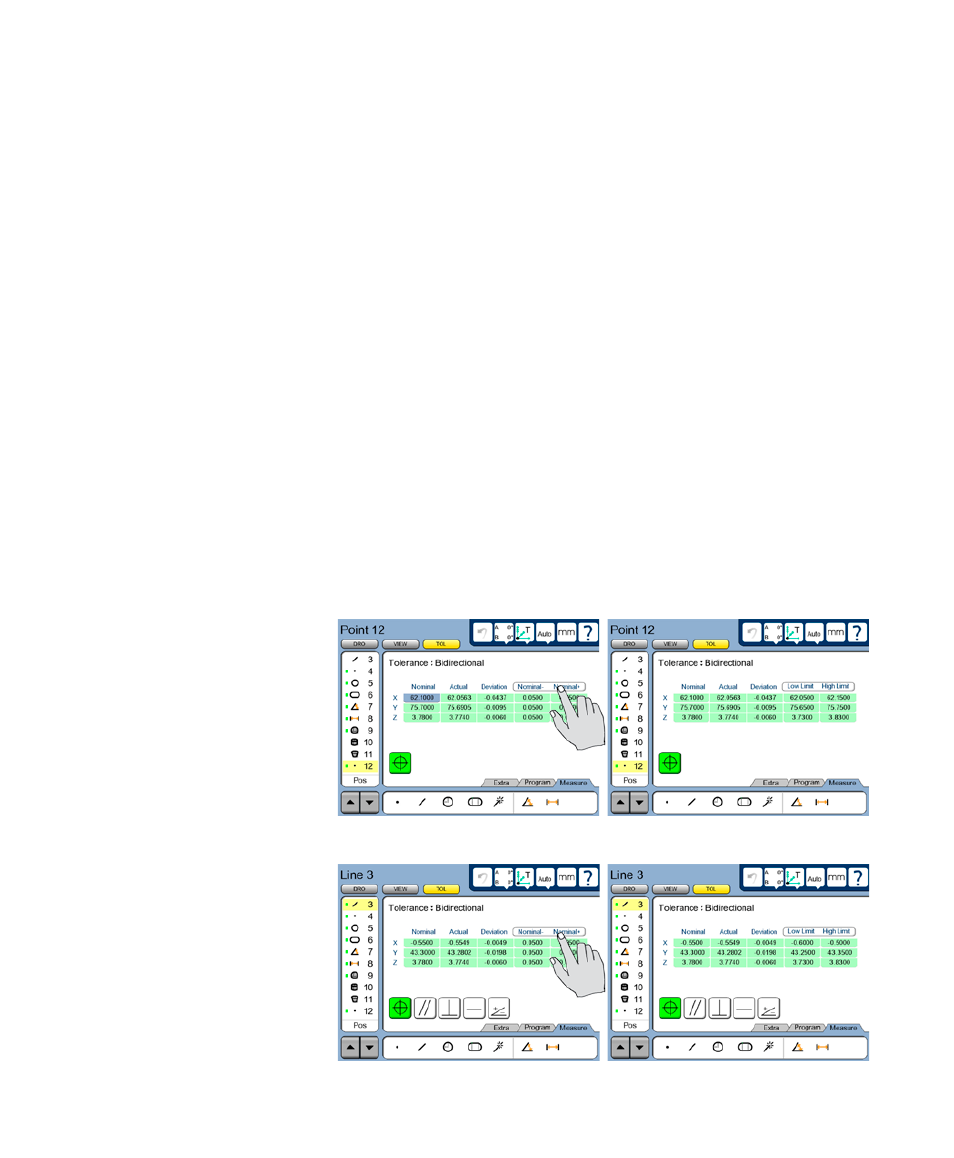Tolerance types, Position/bidirectional – HEIDENHAIN ND 1400 User Manual
Page 88

74
QC-300 Series User’s Guide
Tolerance types
As mentioned earlier, the method of applying tolerances to features is nearly identical for all tolerances.
This section describes tolerances for each feature type. The following tolerance descriptions are includ-
ed:
Position: Bidirectional, true position , MMC, LMC, concentricity
Form: Straightness, roundness, cylindricity, flatness
Orientation: Perpendicularity, parallelism , angle , co-planarity
Runout: Circular runout
Size: Diam/radius, length, width
Position/Bidirectional
Bidirectional tolerances can be applied to points, lines, circles, arcs, slots, rectangles and spheres.
Points
The tolerance screen for points is used to specify the acceptable deviation from a nominal position in the
X, Y and Z axes. The bidirectional tolerance compares the measured location of a point to the nominal
location of the feature’s center or mid point.
Enter the nominal values into the
X, Y and Z axis data fields provid-
ed. Enter the allowed limits into
the Limit data fields as +/- ranges
or as absolute limits. Touch the
Limit data fields to toggle between
+/- ranges or absolute limits.
Lines
The tolerance screen for lines is
used to specify the acceptable de-
viation from nominal positions in
X, Y and Z axes. The bidirectional
tolerance compares the measured
location of the mid point of a line
to the nominal location of the
line’s mid point.